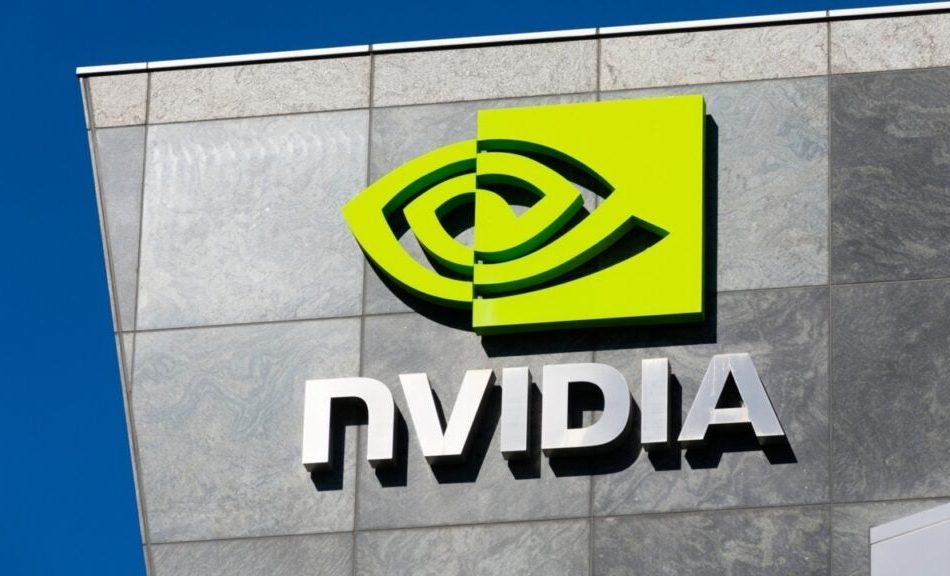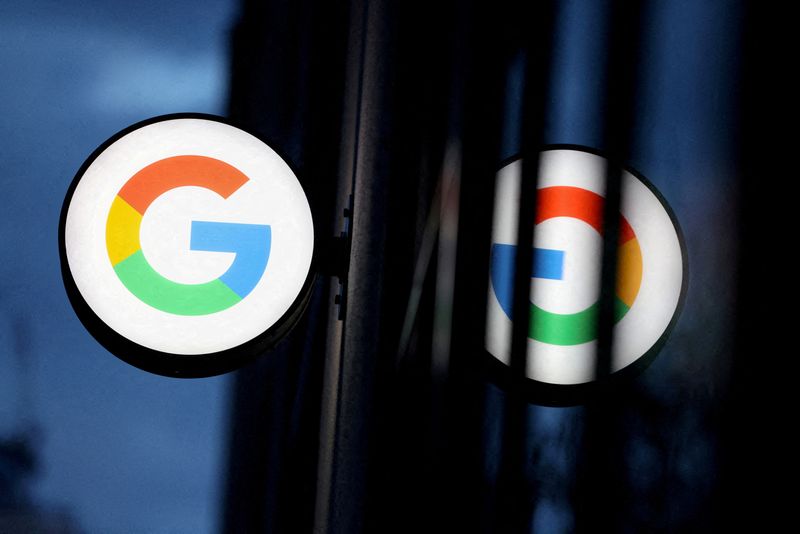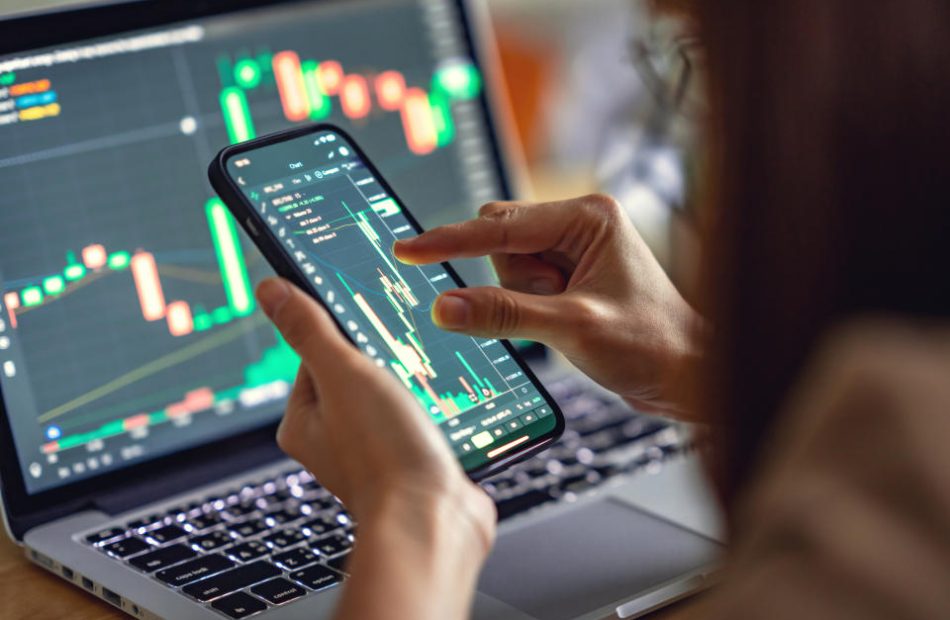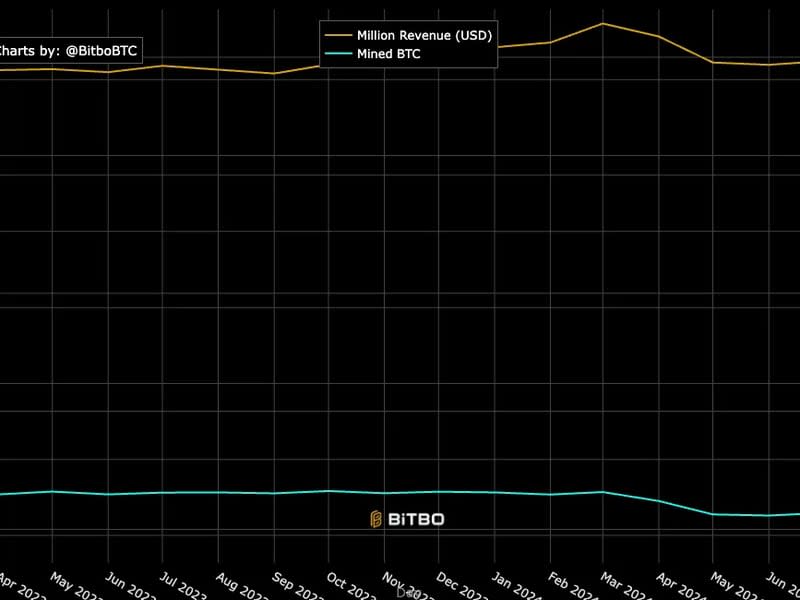If I Could Only Buy 1 Dividend Stock in September, This Would Be My Top Choice
I buy a lot of dividend stocks. I focus on dividends because they have proven to be powerful wealth creators. Over the past 50 years, dividend payers have outperformed the average stock in the S&P 500 — their 9.2% average annual total return beats the 7.7% produced by an equal-weighted S&P 500 index. Dividend growers and initiators have done most of the heavy lifting, posting a 10.2% annual return compared to 6.7% for companies with no change in their dividend policy.
Given the power of dividends, I tend to invest in several dividend stocks each month. However, if I had to choose just one to buy this September, it would be Brookfield Infrastructure (NYSE: BIPC)(NYSE: BIP). Here’s why.
A history of dividend growth and wealth creation
Brookfield Infrastructure formed about 15 years ago as a spinoff from the company now known as Brookfield. It has been a phenomenal wealth creator over that period. The global infrastructure giant has increased its dividend every single year, growing its payout at a 9% compound annual rate. Not only has the stock outperformed the S&P 500 over that period, with a 14.9% average annual total return compared to the index’s average return of 10.8%, but its dividend yields roughly three times as much today, coming in just short of 4% at Friday’s closing price.
Several factors have helped drive the company’s ability to produce such powerful dividend growth and returns. A major one is the overall stability of its portfolio. Brookfield Infrastructure’s businesses generate stable cash flow backed by long-term contracts and government-regulated rate structures. The company says 85% of its funds from operations (FFO) are either protected from or indexed to inflation. That provides it with a stable stream of cash flow that tends to rise by 3% to 4% annually.
Brookfield Infrastructure also benefits from having a strong financial profile. It has a reasonable dividend payout ratio (60% to 70% of its stable cash flows), a strong investment-grade balance sheet, and lots of liquidity that it routinely replenishes by recycling capital. The company uses its financial flexibility to invest in expansion projects and make acquisitions. Those catalysts and other organic drivers have enabled Brookfield Infrastructure to grow its FFO per share at a 15% compound annual rate since its formation.
Multiple growth catalysts
The company expects to continue growing briskly in the future. It has positioned its portfolio to capitalize on three major investment megatrends: digitalization, decarbonization, and deglobalization. Each one has a long growth runway ahead.
Brookfield Infrastructure has built a large data infrastructure platform to capitalize on the digitalization megatrend. It has acquired several data center development platforms, cell tower operators, and fiber-optic networks. The company has also partnered with Intel to build two new semiconductor fabrication plants in the U.S.
The company has also acquired several companies in the transportation, energy midstream, and utility sectors to capitalize on the other two major megatrends. It tends to acquire expandable platforms that it can grow by investing in capital projects and making bolt-on acquisitions. It currently has a record $7.6 billion capital backlog that it expects to complete over the next two to three years. Meanwhile, it expects merger and acquisition activity to pick up in the second half of this year, adding a potential growth accelerant for 2025 and beyond.
Brookfield Infrastructure estimates that its platforms can organically grow its FFO per share by 6% to 9% per year through a combination of inflation-driven rate growth, volume growth as the global economy expands, and development projects. Meanwhile, it sees accretive acquisitions funded by recycling capital boosting its FFO growth rate into the double digits. This forecast easily supports the company’s plan to increase its dividend (which already yields 4%) by 5% to 9% per year.
Powerful total return potential
Brookfield Infrastructure has an exceptional record of growing its dividend and shareholder value. That should continue in the future. It expects to increase its dividend payout by 5% to 9% annually while growing its cash flow per share at a more than double-digit annual rate. That should give it the fuel to produce average annual total returns in the mid-teens. That robust total return potential from such a low-risk company is why I would pick Brookfield Infrastructure above all others if I could only buy one dividend stock this September.
Should you invest $1,000 in Brookfield Infrastructure Corporation right now?
Before you buy stock in Brookfield Infrastructure Corporation, consider this:
The Motley Fool Stock Advisor analyst team just identified what they believe are the 10 best stocks for investors to buy now… and Brookfield Infrastructure Corporation wasn’t one of them. The 10 stocks that made the cut could produce monster returns in the coming years.
Consider when Nvidia made this list on April 15, 2005… if you invested $1,000 at the time of our recommendation, you’d have $731,449!*
Stock Advisor provides investors with an easy-to-follow blueprint for success, including guidance on building a portfolio, regular updates from analysts, and two new stock picks each month. The Stock Advisor service has more than quadrupled the return of S&P 500 since 2002*.
*Stock Advisor returns as of August 26, 2024
Matt DiLallo has positions in Brookfield Infrastructure Corporation, Brookfield Infrastructure Partners, and Intel and has the following options: long January 2025 $30 calls on Intel, short January 2025 $30 puts on Intel, short November 2024 $45 calls on Intel, and short October 2024 $45 calls on Intel. The Motley Fool recommends Brookfield Infrastructure Partners and Intel and recommends the following options: short November 2024 $24 calls on Intel. The Motley Fool has a disclosure policy.
If I Could Only Buy 1 Dividend Stock in September, This Would Be My Top Choice was originally published by The Motley Fool
CrowdStrike Lowers Guidance Due to Outage Impact. Is The Worst Over for the Stock?
A lot of eyes were on CrowdStrike (NASDAQ: CRWD) when the cybersecurity company reported its fiscal second-quarter results, as investors looked to get a better sense of what the fallout would be from its well-covered outage this summer.
Despite losing more than a quarter of its value since the beginning of July, the stock has nearly doubled over the past year.
Let’s take a closer look at the company’s most recent results and whether the worst appears to be behind the stock.
Lowered guidance
With the outage coming late in the quarter, the incident had little impact on CrowdStrike’s financial results. For the second quarter, the company grew its revenue 32% to $963.9 million. That was ahead of its earlier forecast for revenue of between $958.3 million to $961.2 million. Subscription revenue jumped 33% to $918.3 million.
Its annual recurring revenue (ARR), which is the annualized value of its customer subscription contracts, increased 32% to $3.86 billion. Net new ARR in the quarter was $217.6 million.
The company’s adjusted earnings per share (EPS) jumped from $0.74 a year ago to $1.04. Its prior guidance was for adjusted EPS of between $0.98 to $0.99.
It generated operating cash flow of $326.6 million, while free cash flow was $272.2 million. The company ended the quarter with about $3 billion in net cash and short-term investments.
Among its modules seeing strong growth were cloud security, up more than 80% to an ARR of more than $515 million; Identity Security, up over 70% to an ARR of over $350 million; and LogScale Next-Gen SIEM, which saw its ARR surge more than 140% to over $220 million.
More than 65% of CrowdStrike’s customers have five or more modules, while 29% have seven or more. Meanwhile, the number of deals with eight or more modules jumped by 48%.
Looking ahead, CrowdStrike forecasts Q3 revenue between $979.2 million and $984.7 million, with adjusted EPS between $0.80 and $0.81.
The company’s management lowered its fiscal year guidance, as displayed in the table below.
|
Full Fiscal Year Metrics |
||
|---|---|---|
|
Revenue |
$3.98 billion to $4.01 billion |
$3.89 billion to $3.90 billion |
|
Adjusted EPS |
$3.93 to $4.03 |
$3.61 to $3.65 |
Table by Author. Data Source: CrowdStrike filings.
CrowdStrike said the outage toward the end of its quarter caused many deals to be delayed, as it typically closes deals in the last two weeks of the quarter. However, it added that the “vast majority” were still in its pipeline. The company highlighted two large post-outage wins but said it has more than $60 million in deals that it has a line of sight on in the quarter that remain open. It expects them to close in future quarters.
However, the company expects to see extended sales cycles and more deal scrutiny moving forward. It is also looking to get customers to commit to its Falcon platform for longer periods of time, which it thinks will lead to less upselling in the near term and some higher levels of contraction. It thinks this will impact ARR and subscription revenue by about $60 million. It will also shift some planned sales and marketing expenses to R&D, quality assurance, and customer support.
Overall, it is looking for these headwinds to last about a year.
Is it time to buy the dip?
Before the outage, CrowdStrike was widely considered to be the best of breed in cybersecurity, but with the outage, its reputation has taken a hit. Not surprisingly, potential customers are taking more time to decide whether to adopt the company’s platform, while current customers are putting more thought into adding modules.
Overall, the fallout from the outage appears manageable, and the lasting impact should fade if there are no more incidents. That said, the stock still trades at a pretty large premium to the cybersecurity group with a forward price-to-sales (P/S) multiple of about 14 times next year’s analyst estimates. Those estimates also likely haven’t been fully adjusted lower to take into consideration its latest guidance.
Thus, while the stock and its valuation multiples are much lower than a few months ago, the stock is by no means cheap. In the longer term, CrowdStrike’s story likely doesn’t change much because of this hiccup, and the worst could indeed be over for the stock. However, investors do need to weigh the stock’s valuation against its long-term prospects, and that appears to be in balance at the moment.
Don’t miss this second chance at a potentially lucrative opportunity
Ever feel like you missed the boat in buying the most successful stocks? Then you’ll want to hear this.
On rare occasions, our expert team of analysts issues a “Double Down” stock recommendation for companies that they think are about to pop. If you’re worried you’ve already missed your chance to invest, now is the best time to buy before it’s too late. And the numbers speak for themselves:
-
Amazon: if you invested $1,000 when we doubled down in 2010, you’d have $20,104!*
-
Apple: if you invested $1,000 when we doubled down in 2008, you’d have $43,321!*
-
Netflix: if you invested $1,000 when we doubled down in 2004, you’d have $378,232!*
Right now, we’re issuing “Double Down” alerts for three incredible companies, and there may not be another chance like this anytime soon.
*Stock Advisor returns as of August 26, 2024
Geoffrey Seiler has no position in any of the stocks mentioned. The Motley Fool has positions in and recommends CrowdStrike and Palo Alto Networks. The Motley Fool has a disclosure policy.
CrowdStrike Lowers Guidance Due to Outage Impact. Is The Worst Over for the Stock? was originally published by The Motley Fool
This Analyst With 87% Accuracy Rate Sees Over 24% Upside In Nvidia – Here Are 5 Stock Picks For Last Week From Wall Street's Most Accurate Analysts
U.S. stocks settled higher on Friday, with the Dow Jones index notching a new record high during the session.
Wall Street analysts make new stock picks on a daily basis. Unfortunately for investors, not all analysts have particularly impressive track records at predicting market movements. Even when it comes to one single stock, analyst ratings and price targets can vary widely, leaving investors confused about which analyst’s opinion to trust.
Benzinga’s Analyst Ratings API is a collection of the highest-quality stock ratings curated by the Benzinga news desk via direct partnerships with major sell-side banks. Benzinga displays overnight ratings changes on a daily basis three hours prior to the U.S. equity market opening. Data specialists at investment dashboard provider Toggle.ai recently uncovered that the analyst insights Benzinga Pro subscribers and Benzinga readers regularly receive can successfully be used as trading indicators to outperform the stock market.
Top Analyst Picks: Fortunately, any Benzinga reader can access the latest analyst ratings on the Analyst Stock Ratings page. One of the ways traders can sort through Benzinga’s extensive database of analyst ratings is by analyst accuracy. Here’s a look at the most recent stock picks from each of the five most accurate Wall Street analysts, according to Benzinga Analyst Stock Ratings.
Analyst: Leo Mariani
- Analyst Firm: Roth MKM
- Ratings Accuracy: 88%
- Latest Rating: Upgraded rating on Coterra Energy Inc. CTRA from Hold to Buy and raised the price target from $25 to $29 on Aug. 27. This analyst sees around 19% upside in the stock.
- Recent News: On Aug. 1, Coterra Energy reported worse-than-expected second-quarter financial results.
Analyst: Richard Davis
- Analyst Firm: Canaccord Genuity
- Ratings Accuracy: 88%
- Latest Rating: Maintained a Hold rating on Okta, Inc. OKTA and slashed the price target from $95 to $90 on Aug. 29. This analyst sees around 14% upside in the stock.
- Recent News: On Aug. 28, Okta reported quarterly earnings of 72 cents per share, which beat the analyst consensus estimate of 61 cents per share.
Analyst: Zachary Fadem
- Analyst Firm: Wells Fargo
- Ratings Accuracy: 87%
- Latest Rating: Maintained an Equal-Weight rating on Best Buy Co., Inc. BBY and increased the price target from $80 to $95 on Aug. 30. This analyst sees around 5% downside in the stock.
- Recent News: On Aug. 29, Best Buy reported better-than-expected second-quarter financial results raised its FY25 earnings guidance.
Analyst: William Stein
- Analyst Firm: Truist Securities
- Ratings Accuracy: 87%
- Latest Rating: Maintained a Buy rating on NVIDIA Corporation NVDA and increased the price target from $145 to $148 on Aug. 29. This analyst sees about 24% gain in the stock.
- Recent News: On Aug. 28, Nvidia reported better-than-expected earnings and sales results for its second quarter.
Analyst: Trevor Walsh
- Analyst Firm: JMP Securities
- Ratings Accuracy: 86%
- Latest Rating: Reiterated a Market Outperform rating on SentinelOne, Inc. S with a price target of $33 on Aug. 28. This analyst sees around 40% upside in the stock.
- Recent News: On Aug. 27, SentinelOne reported quarterly GAAP losses of 22 cents per share, in-line with the analyst consensus estimate.
Read More:
Market News and Data brought to you by Benzinga APIs
© 2024 Benzinga.com. Benzinga does not provide investment advice. All rights reserved.
Unsold Homes Surge, Eight States Have More Unsold Homes Than Five Years Ago
The U.S. housing market is currently experiencing an unexpected surge in unsold inventory. Eight states now have more unsold homes than in 2019, indicating a significant shift in the market dynamics. The increase in unsold homes, however, is not evenly distributed across the country.
What Happened: Research firm Altos Research reported a 40% increase in homes on the market at the end of August 2024 compared to the same period last year. This equates to over 700,000 unsold single-family homes, with about 10% going into contract each week.
The rise in inventory is not uniform across the country. States like Florida and Arizona have seen a 70% increase in unsold homes compared to last year, while New York has only a 10% increase, reports Housingwire.
Eight states – Alabama, Arkansas, Florida, Idaho, Oklahoma, Tennessee, Texas and Utah – have more unsold inventory than in 2019.
John Burns Real Estate Consulting attributes these inventory trends to migration patterns during the pandemic. Many of these states were popular destinations for inbound migration, leading to increased home construction.
Also Read: Warren Buffett’s Real Estate Firm Coughs Up $250M To Avoid Bigger Payout Over Commissions
However, the rise in mortgage rates since 2022 has slowed down migration, contributing to the inventory build-up.
Other factors, such as increased costs of homeownership, including taxes and insurance, have also contributed to the rise in unsold inventory. For instance, homeowners in Texas and Florida are grappling with higher taxes and insurance costs, respectively.
Why It Matters: The trend of unsold inventory could be a sign of a return to “normal” markets, offering more selection for homebuyers. However, it could also indicate potential price adjustments in areas with a greater supply of unsold homes.
The housing market dynamics are influenced by a variety of factors, including migration patterns, mortgage rates, and costs of homeownership.
Understanding these factors can help potential buyers and sellers make informed decisions.
Read Next:
Americans Face Historic Lack Of Affordability In Housing Market, Data Shows
This content was partially produced with the help of Benzinga Neuro and was reviewed and published by Benzinga editors.
Market News and Data brought to you by Benzinga APIs
© 2024 Benzinga.com. Benzinga does not provide investment advice. All rights reserved.
Tech market values fall on AI costs and recession fears; Eli Lilly, Berkshire gain
(Reuters) – Market values of major tech firms declined in August amid concerns over escalating artificial intelligence infrastructure costs and rising recession risks that would make the stocks particularly vulnerable during a market correction.
Last month, Alphabet Inc’s lost 4.7% of its market value as a slowdown in YouTube’s advertising sales fuelled concerns about its earnings. A U.S. judge’s ruling that Google had violated antitrust laws and the emergence of new competition from OpenAI, which is developing an AI-based search engine prototype, also contributed to its shares’ decline.
Amazon.com Inc’s market value fell 4.5%, affected by slowing online sales.
Tesla’s market capitalisation fell 7.7% last month after weaker Q2 earnings and following the news that Canada planned a new 100% tariff on Chinese-made electric vehicles.
The world’s most valuable automaker started shipping Shanghai-made EV’s to Canada last year and Ottawa’s plans raised concerns about the potential profit impact of exporting from its higher-cost U.S. production base.
Meanwhile, Nvidia’s market value fell in the last week of August by 7.7% to $2.92 trillion, after it projected third-quarter gross margins below market estimates and reported revenues that only met expectations, disappointing investors who were expecting a stronger performance.
Nvidia, which commands more than 80% of the AI chip market, stands in a unique position as both the largest enabler as well as beneficiary of surging AI development.
On a positive note, U.S. drugmaker Eli Lilly’s market value surged nearly 20%, leading market gainers, driven by robust sales and the launch of a weight-loss drug that significantly reduces the risk of developing type 2 diabetes in overweight adults.
Berkshire Hathaway’s market value closed above $1 trillion for the first time at the end of August, reflecting investor confidence in the conglomerate that Warren Buffett built over nearly six decades into what many consider a proxy for the U.S. economy.
Meta’s market value also climbed nearly 10% after it beat market expectations for its second-quarter revenues and forecast strong revenue growth in the July-September quarter, indicating that strong digital ad spending on its platforms could offset the costs of its AI investments.
(Reporting By Patturaja Murugaboopathy and Gaurav Dogra in Bengaluru; Editing by Tomasz Janowski)
If I Could Only Buy 1 Stock in the Last Half of 2024, I'd Pick This
After a short-lived dip that started in the second half of July, the S&P 500 quickly bounced back and is now flirting with a new record high. Investors looking to put some money to work might be discouraged because they believe there aren’t many compelling opportunities in today’s market.
But that’s a flawed perspective. In fact, I believe one company looks like a no-brainer portfolio addition right now.
If I could buy only one stock in the last half of 2024, I’d pick Walt Disney (NYSE: DIS). Here’s why.
Disney’s transition
One of the most notable secular shifts happening across the economy has been the rise of streaming entertainment at the expense of traditional cable TV. The monster success of Netflix propelled this change. Now, Disney is in the middle of a major transition to its business model.
The company’s once-thriving linear networks, like ABC and ESPN, are still generating loads of profits. However, they are in secular decline as more households cut the cord. Consequently, revenue will remain under pressure here.
At the same time, to keep up with the shifting industry, Disney has had to invest aggressively in technology and content to build out its streaming operations, which include Disney+, Hulu, and ESPN+. Direct-to-consumer (DTC) services have so far posted billions in operating losses, which is a key factor that has weighed on the stock.
Disney’s latest financial update, though, reveals solid improvements in the DTC segment. Combined, the streaming services generated a positive operating income of $47 million in the fiscal 2024 third quarter (ended June 29). That’s not anything to write home about, but executives believe the company will improve in this area going forward.
However, it’s not all encouraging news. The experiences segment, which is where results for parks, cruises, and consumer products are included, is facing some challenges. Revenue was up just 2% in Q3, with operating income down 3%. “The demand moderation we saw in our domestic businesses in Q3 could impact the next few quarters,” the press release reads.
I will adopt a more upbeat perspective as it pertains to the long term. My view is that the experiences segment is a lucrative one that’s essential to Disney’s competitive standing. That’s why the company is planning to invest $60 billion over the next decade to bolster its offerings here, forcing my confidence that the segment will be stronger in the future.
Disney’s valuation
The market hates uncertainty. That’s the best word to describe Disney’s situation over the past few years as the media landscape shifts to streaming.
Consequently, Disney shares are cheap. They trade at a forward price-to-earnings (P/E) ratio of 17 based on fiscal 2025’s consensus earnings per share estimate. If you believe the bottom line will expand meaningfully in the years ahead, like I do, then valuation is only going to get more attractive the further out you look. For what it’s worth, the S&P 500 trades at a forward P/E multiple of over 23, so Disney goes for a significant discount to the overall market.
In my opinion, that valuation creates a wonderful opportunity to buy shares. Investors can purchase a business that has an economic moat that discourages new entrants from coming in and adds durability over the long term.
Disney’s intellectual property, including its characters, storylines, and franchises, many of which were created decades ago, holds a special place in the minds and hearts of consumers across the globe. I think it’s impossible for any business to match or replace this type of position.
Of course, investors looking to buy the stock must have the patience to wait for solid improvements to happen, particularly around the view that earnings will soar. However, I believe that over the next three to five years, Disney will prove to be a successful investment.
Should you invest $1,000 in Walt Disney right now?
Before you buy stock in Walt Disney, consider this:
The Motley Fool Stock Advisor analyst team just identified what they believe are the 10 best stocks for investors to buy now… and Walt Disney wasn’t one of them. The 10 stocks that made the cut could produce monster returns in the coming years.
Consider when Nvidia made this list on April 15, 2005… if you invested $1,000 at the time of our recommendation, you’d have $731,449!*
Stock Advisor provides investors with an easy-to-follow blueprint for success, including guidance on building a portfolio, regular updates from analysts, and two new stock picks each month. The Stock Advisor service has more than quadrupled the return of S&P 500 since 2002*.
*Stock Advisor returns as of August 26, 2024
Neil Patel and his clients have positions in Walt Disney. The Motley Fool has positions in and recommends Netflix and Walt Disney. The Motley Fool has a disclosure policy.
If I Could Only Buy 1 Stock in the Last Half of 2024, I’d Pick This was originally published by The Motley Fool
First Mover Americas: Bitcoin Sits Around $58.5K at Start of Historically Bearish September
This article originally appeared in First Mover, CoinDesk’s daily newsletter, putting the latest moves in crypto markets in context. Subscribe to get it in your inbox every day.
Latest Prices
CoinDesk 20 Index: 1,843.91 +0.88%
Bitcoin (BTC): $58,458 +0.67%
Ether (ETH): $2,519 +1.89%
S&P 500: 5,658 +1%
Gold: $2400 −0.15%
Nikkei 225: 38,700.87 +0.14%
Top Stories
Bitcoin fluctuated around the $58,000 mark amid a generally sedate market on Labor Day in the U.S. The largest cryptocurrency was trading around $58,600 at the time of writing, about 1% higher in 24 hours. The broader digital asset market has risen 0.9%%, according to CoinDesk Indices data, with ETH and SOL gaining around 1.9% and 0.5%, respectively. U.S.-listed exchange-traded funds (ETFs) tracking BTC posted total net outflows of $175 million on Friday, extending a losing streak to four days. Ether ETFs had zero net inflows or outflows despite $173 million in trading volume, data tracked by SoSoValue shows.
Some traders noted that September is generally one of bitcoin’s most bearish months, but said that an interest-rate cut by the Fed could break the trend. “September is a historically negative month for bitcoin, as data shows it has an average value depletion rate of 6.56%,” Innokenty Isers, founder of crypto exchange Paybis, said. “Should the Feds cut the interest rate in September, it might help bitcoin rewrite its negative history as rate cuts generally lead to excessive US dollar flow in the economy – further strengthening the outlook of bitcoin as a store of value.”
Election punters on Polymarket are favoring Republican candidate Donald Trump again as Democrat Kamala Harris’ odds slipped to 47% over the weekend from even odds earlier. Harris’ appeal has drifted lower in the past weeks among traders on Polymarket, while Trump’s has gradually climbed back over 50%. He is again in the lead after nearly two weeks of even odds. Traders have placed $99 million in on-chain bets on Trump winning the election, with over $95 million put on Harris. Harris’ odds have slipped amid outcry for a proposal to tax unrealized gains for people worth over $100 million. Meanwhile, Trump’s odds have increased as he promotes a forthcoming decentralized finance project that could offer “high yields” for crypto users.
Chart of the Day
-
The chart shows that bitcoin miners’ revenue fell in August to the lowest level since September 2023.
-
This was accompanied by an increase in the bitcoin mining difficulty and decrease in the number of BTC mined.
-
This highlights the challenge that miners face in adapting to the post-halving world.
-
Source: Bitbo
– Jamie Crawley
Trending Posts
AT&T or Verizon: Which Stock Offers the Safer Dividend?
AT&T (NYSE: T) and Verizon (NYSE: VZ) have been popular income stocks for decades. Both emerged in the era of landlines, supporting dividends through stable businesses. Even as AT&T and Verizon pivoted into wireless and broadband internet services, they increased their payouts over time.
However, staying competitive against one another and the rising threat of T-Mobile left both companies with massive debt loads. That obligation led to AT&T slashing its payout in 2022. In contrast, Verizon maintains a streak of payout hikes.
Companies have free reign to adjust payout levels at any time. Verizon’s annual payout hikes might make it the more desirable dividend, but its need to pay down debt increases the odds of a dividend cut.
Thus, the question for investors is whether AT&T’s lower payout makes it a better dividend stock, or should they stay with Verizon? Let’s take a closer look.
How the dividends compare
At first glance, AT&T looks like the weaker dividend stock. The company walked away from a 35-year history of payout hikes in 2021, then slashed its dividend by just under 50% to $1.11 per share annually the next year. This gives it a dividend yield of 5.6% at current prices.
In contrast, Verizon has built a 17-year history of payout hikes. Also, since ending such a streak can diminish confidence in a stock, such companies tend to continue the annual payout hikes. That has led to a yearly dividend of $2.66 per share, a cash return of 6.4% at current prices.
Although Verizon offers a higher return, both dividends far exceed the S&P 500 average of 1.3%. Also, both come at a significant cost to their companies.
AT&T spends just over $8 billion per year to maintain its dividend. Free cash flow was $7.7 billion in the first half of 2024 and $11.6 billion in the last two quarters of 2023, for a total of $19.3 billion in free cash flow over the 12 months.
In Verizon’s case, its higher yield comes with a higher cost. It spends just over $11 billion annually to cover the cost of its payout. Still, free cash flow closely matched AT&T, with $8.5 billion in the first two quarters of 2024 and $10.8 billion in the last half of 2023.
That means that Verizon coincidentally also generated $19.3 billion in free cash flow over the trailing twelve months. It also implies that Verizon can generate the cash needed to maintain its payout while leaving cash free for other purposes.
Financial challenges
Unfortunately for both companies, they also need to generate enough free cash flow to service and, ideally, reduce their debt burdens.
As of the end of the second quarter of 2024, AT&T claims just under $131 billion in total debt, slightly above the $119 billion the company holds in stockholders’ equity.
Despite the apparent strain on the balance sheet, AT&T’s debt stood at over $143 billion in the year-ago quarter, meaning it eliminated $12 billion. Also, it has $5.2 billion of that debt maturing over the next year. At that rate, it could retire that debt without the need for refinancing.
In contrast, Verizon carries a higher absolute and relative debt burden. It holds more than $149 billion in debt when its stockholders’ equity is a mere $98 billion.
Moreover, the total debt did not fall significantly, dropping from just under $153 billion in the year-ago quarter. Additionally, its debt maturing in one year stands at more than $22 billion. At its current pace, it will probably have to refinance most of that obligation, likely at higher interest rates.
Which is the safer dividend?
When comparing the two companies, AT&T appears to offer a safer dividend.
Admittedly, AT&T stock offers a slightly lower dividend yield. Also, since it does not currently increase its payout yearly, a dividend cut would probably hurt its stock less. Nonetheless, AT&T maintains its dividend while significantly reducing its debt, meaning it probably does not need to slash its payout.
In contrast, Verizon’s situation is more precarious. While it can technically afford its dividend, it has a higher debt burden relative to its stockholders’ equity and has reduced that debt more slowly. Assuming it has to refinance maturing debt, the pressure to follow AT&T’s lead and slash its payout could prove too difficult to resist.
Ultimately, income investors tend to be more risk-averse. Considering the debt situation of each company, they probably face less risk going with AT&T.
Should you invest $1,000 in AT&T right now?
Before you buy stock in AT&T, consider this:
The Motley Fool Stock Advisor analyst team just identified what they believe are the 10 best stocks for investors to buy now… and AT&T wasn’t one of them. The 10 stocks that made the cut could produce monster returns in the coming years.
Consider when Nvidia made this list on April 15, 2005… if you invested $1,000 at the time of our recommendation, you’d have $731,449!*
Stock Advisor provides investors with an easy-to-follow blueprint for success, including guidance on building a portfolio, regular updates from analysts, and two new stock picks each month. The Stock Advisor service has more than quadrupled the return of S&P 500 since 2002*.
*Stock Advisor returns as of August 26, 2024
Will Healy has no position in any of the stocks mentioned. The Motley Fool recommends T-Mobile US and Verizon Communications. The Motley Fool has a disclosure policy.
AT&T or Verizon: Which Stock Offers the Safer Dividend? was originally published by The Motley Fool
MDB INVESTOR ALERT: Bronstein, Gewirtz & Grossman LLC Announces that MongoDB, Inc. Investors with Substantial Losses Have Opportunity to Lead Class Action Lawsuit!
NEW YORK, Sept. 02, 2024 (GLOBE NEWSWIRE) — Attorney Advertising–Bronstein, Gewirtz & Grossman, LLC, a nationally recognized law firm, notifies investors that a class action lawsuit has been filed against MongoDB, Inc. (“MongoDB” or “the Company”) MDB and certain of its officers.
Class Definition
This lawsuit seeks to recover damages against Defendants for alleged violations of the federal securities laws on behalf of all persons and entities that purchased or otherwise acquired MongoDB securities between August 23, 2023, and May 30, 2024, inclusive (the “Class Period”). Such investors are encouraged to join this case by visiting the firm’s site: bgandg.com/MDB.
Case Details
The complaint alleges that on March 7, 2024, MongoDB reported strong Q4 2024 results and then announced lower-than-expected full-year guidance for 2025. The Complaint adds that the Company attributed this to a change in its “sales incentive structure,” which led to a decrease in revenue related to “unused commitments and multi-year licensing deals.” Following this news, MongoDB’s stock dropped $28.59 per share to close at $383.42. Then, on May 30, 2024, MongoDB further lowered its guidance for the full year 2025, attributing it to “macro impacting consumption growth.” Analysts commenting on the reduced guidance questioned whether changes to the Company’s marketing strategy “led to change in customer behavior and usage patterns.” Following this news, MongoDB’s stock dropped $73.94 per share to close at $236.06.
What’s Next?
A class action lawsuit has already been filed. If you wish to review a copy of the Complaint, you can visit the firm’s site: bgandg.com/MDB or you may contact Peretz Bronstein, Esq. or his Client Relations Manager, Nathan Miller, of Bronstein, Gewirtz & Grossman, LLC at 332-239-2660. If you suffered a loss in MongoDB you have until September 9, 2024, to request that the Court appoint you as lead plaintiff. Your ability to share in any recovery doesn’t require that you serve as lead plaintiff.
There is No Cost to You
We represent investors in class actions on a contingency fee basis. That means we will ask the court to reimburse us for out-of-pocket expenses and attorneys’ fees, usually a percentage of the total recovery, only if we are successful.
Why Bronstein, Gewirtz & Grossman
Bronstein, Gewirtz & Grossman, LLC is a nationally recognized firm that represents investors in securities fraud class actions and shareholder derivative suits. Our firm has recovered hundreds of millions of dollars for investors nationwide.
Attorney advertising. Prior results do not guarantee similar outcomes.
Contact
Bronstein, Gewirtz & Grossman, LLC
Peretz Bronstein or Nathan Miller
332-239-2660 | info@bgandg.com

Market News and Data brought to you by Benzinga APIs
© 2024 Benzinga.com. Benzinga does not provide investment advice. All rights reserved.
1 Growth Stock Down 81% to Buy Right Now
Not that long ago, Etsy (NASDAQ: ETSY) was one of the top companies that investors could have owned. From the pandemic low in March 2020 to their all-time high in November 2021, shares skyrocketed 837%.
But slowing growth and the market’s disdain for growth tech stocks pressured investor sentiment. Etsy currently trades 81% below its peak price. But it’s still a smart buying opportunity right now.
Zoom in
Etsy’s growth was through the roof in 2020 and 2021. The company was adding buyers and sellers to its platform. Its gross merchandise sales (GMS) were soaring. Demand was very strong.
However, the normalization of consumer behavior, with people starting to leave their homes to shop again, created the perfect headwind for Etsy. It also didn’t help that inflation started to rear its ugly head about three years ago.
The slowdown has continued. In the most recent quarter (Q2 2024, ended June 30), Etsy posted a 2.1% year-over-year GMS decline. That figure was slightly lower than in the same period three years before. It makes sense that consumers are pulling back on discretionary spending when it seems like the price of everything has gone up in the past couple of years.
GMS is expected to fall again in the current quarter.
Zoom out
It’s understandable for investors to get caught up in quarterly financial figures. But if you’re a long-term stock market participant, then it’s always best to zoom out and focus on the bigger picture. With this perspective, it’s easy to still have a favorable view of Etsy’s business.
The company is truly differentiating itself. There are wide product assortments in various categories, like home furnishings, apparel, jewelry, and craft supplies tailored to specific needs. According to a survey, 83% of buyers agreed that Etsy sold items that they couldn’t find anywhere else.
The retail sector broadly, and the e-commerce niche specifically, is hyper-competitive. All companies operating in the industry must constantly worry about Amazon‘s presence. But while the tech titan thrives when it comes to mass-produced goods and fast shipping, Etsy draws in shoppers looking for unique offerings. This is a key competitive strength.
What’s more, Etsy’s two-sided ecosystem, as demonstrated by its 96.6 million active buyers and 8.8 million active sellers, is supported by network effects. Consumers want to come to the site because there are so many specialized goods being sold. Small merchants and entrepreneurs looking to showcase their craft might find no better platform to set up shop to target a global customer base.
Cheap stock
The S&P 500 has climbed 19% since Etsy hit its all-time high. However, the e-commerce stock has lost 81% of its value during the same time. That’s an alarming trend.
However, it means that shares are cheap. They trade at a forward price-to-earnings ratio of 12.2, the lowest valuation in almost the last three years. This depressed multiple suggests that Etsy is a terrible business. And that’s just not true. I already talked about its differentiated marketplace offerings and the presence of network effects.
Also, consider the total addressable market, which management estimates is $500 billion (counting online sales of all relevant product categories) in its six core geographies, which includes the U.S., U.K., Canada, Australia, France, and Germany.
Plus, Etsy is a consistently profitable enterprise that rakes in lots of free cash flow every quarter. This reduces financial risk.
Depending on the state of the economy and the direction of interest rates and inflation, the fear is that the difficult times for Etsy could last for a few more quarters before things start to improve. But this is precisely where the opportunity lies for investors. I believe that three to five years down the road, this stock could be a big winner for your portfolio.
Should you invest $1,000 in Etsy right now?
Before you buy stock in Etsy, consider this:
The Motley Fool Stock Advisor analyst team just identified what they believe are the 10 best stocks for investors to buy now… and Etsy wasn’t one of them. The 10 stocks that made the cut could produce monster returns in the coming years.
Consider when Nvidia made this list on April 15, 2005… if you invested $1,000 at the time of our recommendation, you’d have $731,449!*
Stock Advisor provides investors with an easy-to-follow blueprint for success, including guidance on building a portfolio, regular updates from analysts, and two new stock picks each month. The Stock Advisor service has more than quadrupled the return of S&P 500 since 2002*.
*Stock Advisor returns as of August 26, 2024
John Mackey, former CEO of Whole Foods Market, an Amazon subsidiary, is a member of The Motley Fool’s board of directors. Neil Patel and his clients have no position in any of the stocks mentioned. The Motley Fool has positions in and recommends Amazon and Etsy. The Motley Fool has a disclosure policy.
1 Growth Stock Down 81% to Buy Right Now was originally published by The Motley Fool










